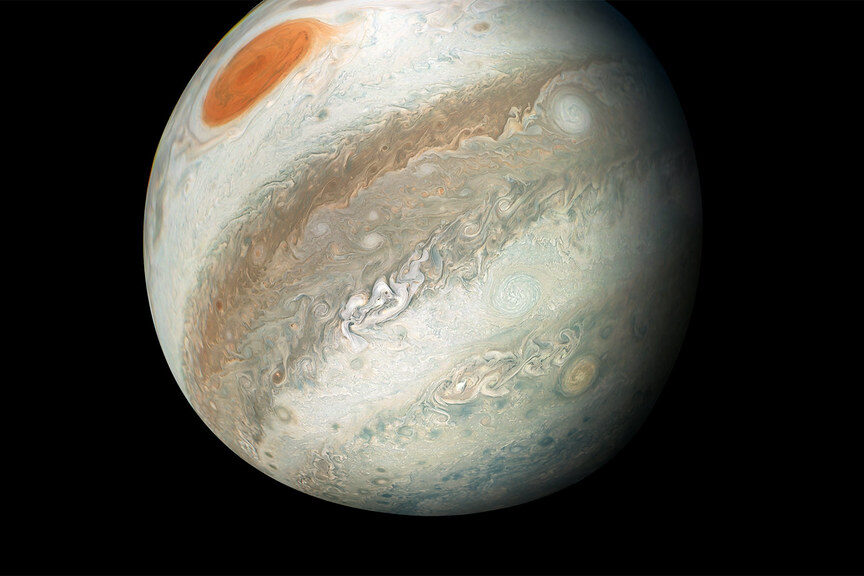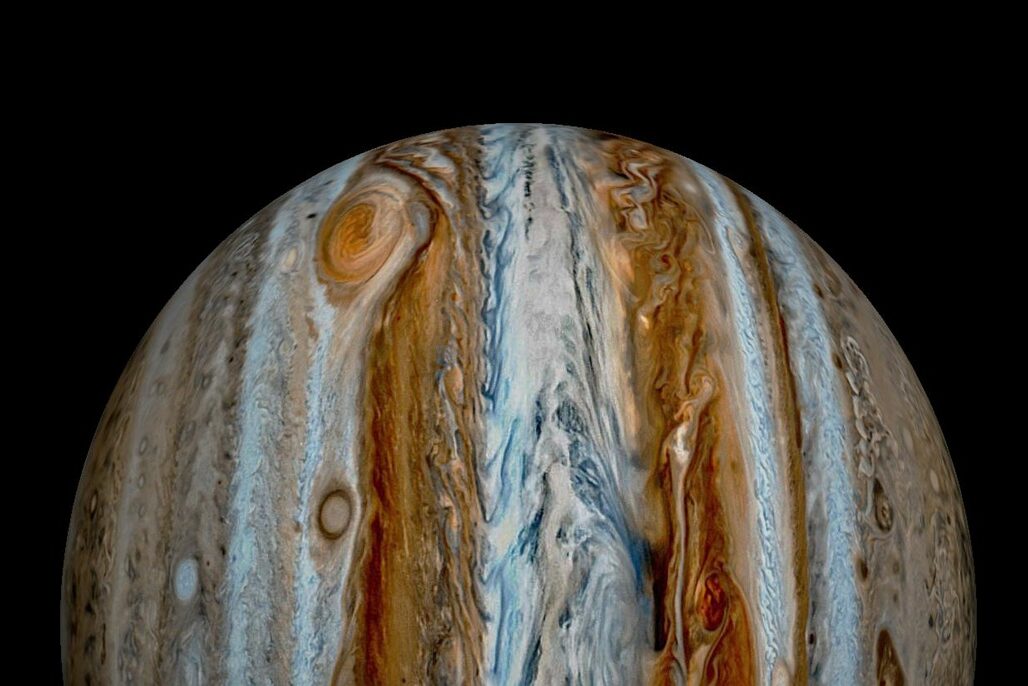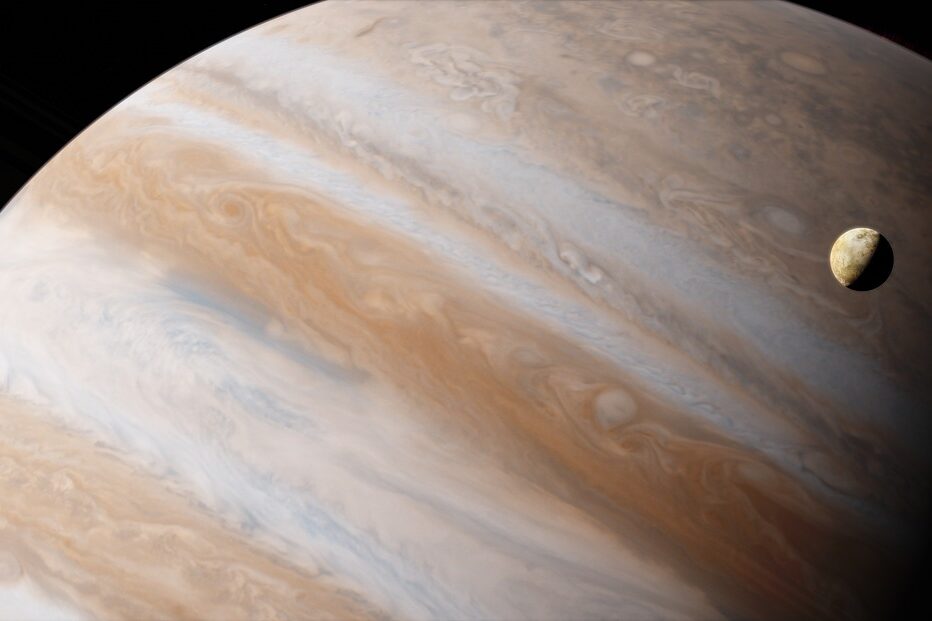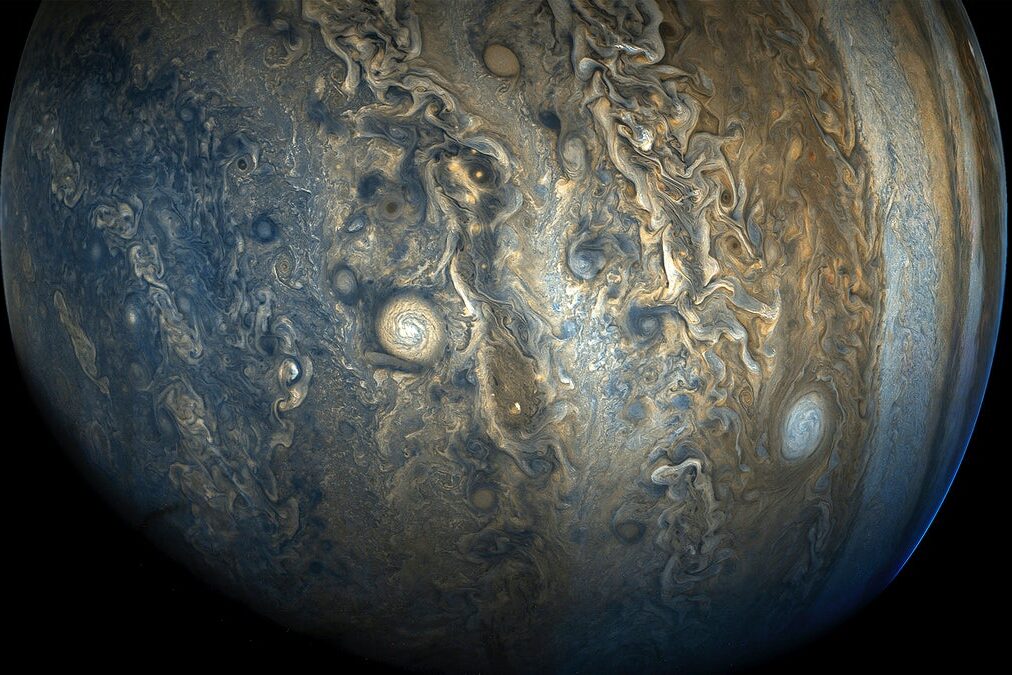NASA Spots Sprites And Elves In Jupiter’s Atmosphere
NASA’s Juno mission on Jupiter has discovered “sprites” and “elves” dancing in the atmosphere of the planet.
This article is more than 2 years old

NASA’s Juno mission on Jupiter has discovered “sprites” and “elves” dancing in the atmosphere of the planet. It is the first time that sprites and elves have been found on a planet other than Earth.
Of course, there aren’t the types of sprites and elves one would hear about in a fairy tale, but a type of bright, brief flash of light. These occurrences happen on Earth about 60 miles above thunderstorms and can spread about 15 to 30 miles across. Sprites and elves occur for just a few milliseconds and take the shape of jellyfish.
In a report published on October 27, 2020, in the Journal of Geophysical Research: Planets, the study’s lead author Rohini S. Giles said, “On Earth, sprites and elves appear reddish in color due to their interaction with nitrogen in the upper atmosphere,” said Giles. “But on Jupiter, the upper atmosphere mostly consists of hydrogen, so they would likely appear either blue or pink.”

So far, Juno has captured 11 of these sprites and elves. The lightning on Jupiter is known to be hundreds of times more powerful than the strikes that happen on Earth. As Juno continues to make more passes around Jupiter, they’re continuing to look for more evidence of these lightning occurrences.
In the report, Giles said “Now that we know what we are looking for, it will be easier to find them at Jupiter and on other planets. And comparing sprites and elves from Jupiter with those here on Earth will help us better understand electrical activity in planetary atmospheres.”
Juno launched in August 2011, where it began a five-year journey to Jupiter. Juno also used the Earth’s orbit as a way to slingshot boost the ship to reach 165,000 miles per hour. The Juno spacecraft has been orbiting the Milky Way’s largest planet since July 2016. In addition to discovering sprites and elves on Jupiter, Juno’s studies have discovered all sorts of new insights in Jupiter, including new details about the storms of Jupiter and about the core of the planet.

Juno’s five-year mission will end in July 2021, but the mission managers are hoping for an extension that would continue operations until September 2025. Now that Juno has explored the sprites, elves, storms, and core of Jupiter, they now want to make additional orbits around Jupiter to get closer to the planet’s moons, such as Io, Europa, and Ganymede.
NASA is planning to decide by year’s end if Juno’s research on Jupiter will be allowed to continue. By the end of its mission in July 2021, Juno will have lapped Jupiter 34 times. As of right now, the Juno takes about 53 days to orbit the planet, searching for sprites and elves as it does so.

This 53-day orbit is slower than would be expected, but this slower traveling speed around Jupiter allows for better scientific study of Jupiter, its moons, and any potential sprites and elves. This slower orbit also has allowed Juno to venture closer to Jupiter’s moons this year, and also allowed the mission to already operate longer than they had originally planned.
If Juno’s mission is allowed its extension, beyond searching for sprites and elves, the team will be doing some fascinating exploration, including getting relatively close to Jupiter’s largest moon, Ganymede, and by 2024, it would also get close to Jupiter’s volcanic moon, Io.
Hopefully, Juno’s mission will continue for years to come, allowing us even more information about Jupiter, it’s surrounding planets, and the sprites and elves that dance high about the surface.












